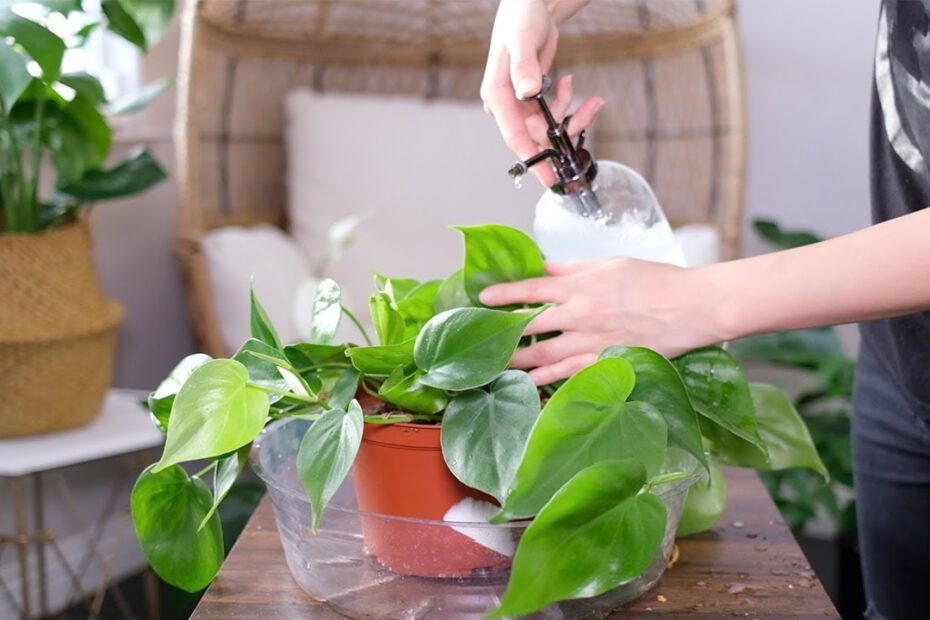How do you take care of a heart leaf philodendron?
Taking care of a heart leaf philodendron is like having a low-maintenance roommate who just needs a little TLC to thrive. First, light is key—these plants love bright, indirect sunlight, but they’ll forgive you if you occasionally forget to open the curtains. Just don’t leave them in direct sun, or they’ll throw a leafy tantrum. Watering is another biggie—let the top inch of soil dry out before giving it a drink. Overwatering is the equivalent of forcing your plant to wear wet socks, and nobody likes that.
Here’s a quick cheat sheet to keep your heart leaf philodendron happy:
- Humidity: They adore a bit of moisture in the air, so mist them occasionally or place them near a humidifier.
- Fertilizer: Feed them a balanced liquid fertilizer once a month during the growing season—think of it as their favorite snack.
- Pruning: Trim any yellow or dead leaves to keep them looking fresh and encourage new growth.
With these tips, your heart leaf philodendron will be the star of your plant collection, no drama required.
Are heart leaf philodendron rare?
If you’re wondering whether the heart leaf philodendron is a rare gem you’ll need to hunt down like a botanical Indiana Jones, the answer is a resounding nope. These lush, trailing beauties are about as rare as a coffee shop in a hipster neighborhood—they’re everywhere! Known for their heart-shaped leaves and easy-going nature, heart leaf philodendrons are a staple in homes, offices, and even that one friend’s house who somehow keeps every plant alive. Their popularity is partly due to their resilience and ability to thrive in less-than-ideal conditions, making them a favorite for both seasoned plant parents and newbies.
So, why do people even ask if they’re rare? Well, their stunning appearance might trick you into thinking they’re some kind of exotic treasure. But fear not, you can snag one at most garden centers, online plant shops, or even from a generous friend with a thriving vine. Here’s a quick list of reasons why heart leaf philodendrons are not rare:
- They’re widely cultivated and easy to propagate.
- They’re affordable and accessible in most regions.
- They’re a common choice for indoor plant enthusiasts.
In short, if you’re looking for a heart leaf philodendron, you’re in luck—they’re as common as houseplants get, and that’s a good thing!
Do heart leaf philodendrons climb or hang?
Heart leaf philodendrons are the ultimate multitaskers of the plant world—they can climb and hang, depending on your vibe. If you give them a moss pole, trellis, or even a nearby wall, these leafy adventurers will happily climb their way to the top, showing off their heart-shaped leaves like green trophies. But if you’re more into the cascading jungle aesthetic, just let them hang from a shelf or macramé hanger, and they’ll drape themselves like a living curtain of greenery. It’s like having a plant that can’t decide if it’s a mountaineer or a free spirit.
Here’s the deal: heart leaf philodendrons are natural climbers in the wild, using aerial roots to latch onto trees and scale heights. But in your home, they’re totally cool with chilling in a hanging basket, letting their vines spill over the edges like a leafy waterfall. Whether you’re Team Climb or Team Hang, these plants are flexible enough to match your decor style. Just remember: more light = more climbing, while less light = more hanging. It’s like they’re secretly judging your interior design choices.
- Climbing: Provide a moss pole or trellis for vertical growth.
- Hanging: Use a basket or shelf for a cascading effect.
- Light Matters: Bright light encourages climbing; lower light promotes hanging.
Does heartleaf philodendron need sunlight?
Yes, the heartleaf philodendron does need sunlight, but it’s not as picky as your aunt who insists on sitting by the window at brunch. This plant thrives in bright, indirect light, which means it loves to bask in the glow of a sunny room without getting scorched by direct rays. Think of it as the Goldilocks of houseplants—it wants its light just right. Too much direct sun, and its leaves might throw a fit and turn yellow. Too little, and it’ll grow slower than a sloth on a lazy Sunday.
If you’re wondering where to place your heartleaf philodendron, here’s a quick guide:
- Near a north or east-facing window: Perfect for that gentle morning light.
- A few feet away from a south or west window: Avoids harsh afternoon sunburn.
- Under artificial grow lights: Great for those dark corners where sunlight is a myth.
Remember, this plant is a survivor—it can tolerate low light, but it won’t be living its best life. Give it some light, and it’ll reward you with lush, trailing vines that’ll make your space look like a jungle oasis.
